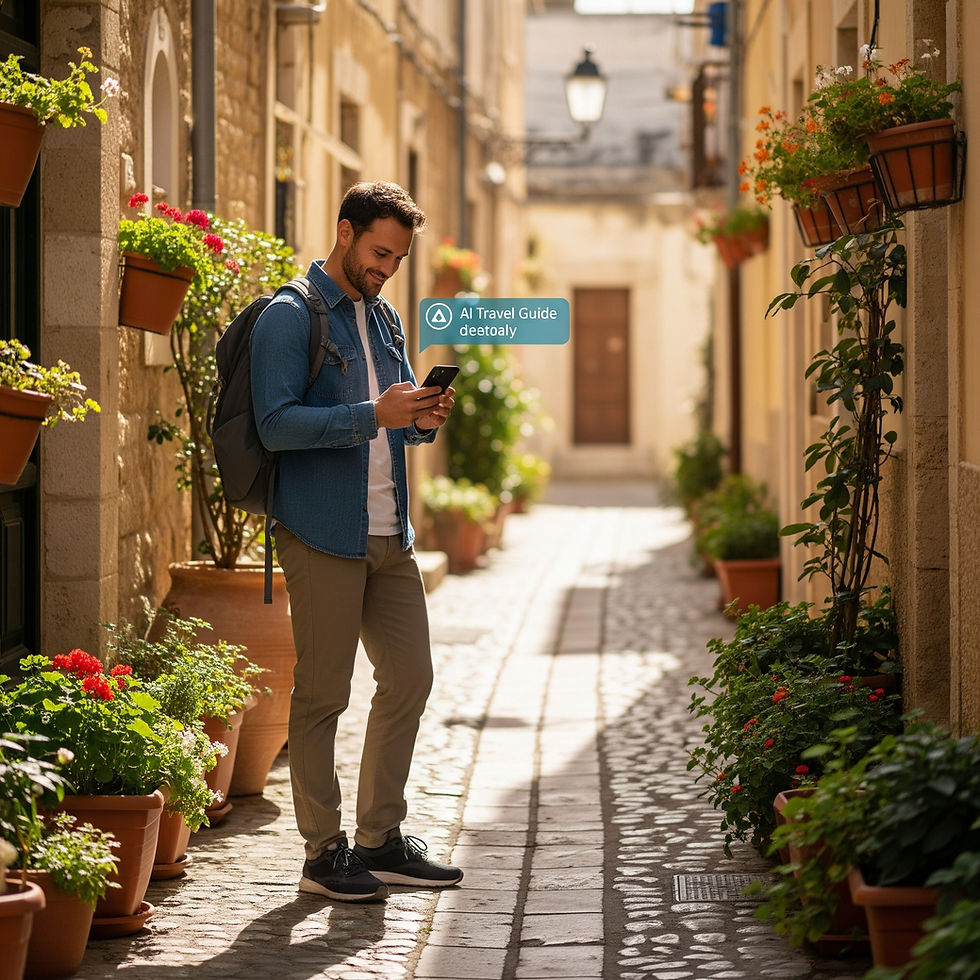7 Trends Shaping the Way We Travel in 2025 - Smart Tourism Insights
- Chiara Verdi
- May 14
- 2 min read
Updated: Jun 9
Introduction
Travel is no longer about ticking off sights on a checklist. In 2025, travelers and cities alike are embracing new smart tourism trends that prioritize personalization, sustainability, and tech-enabled convenience. From AI-powered guides to data-rich city planning tools, these smart tourism trends in 2025 are redefining how we explore the world — and how destinations deliver value in return.
Global spending on AI in tourism is forecast to surge from US $2.95 billion in 2024 to US $13.38 billion by 2030 (28.7 % CAGR), and 40 % more travelers now rely on AI tools to plan itineraries than a year ago. Below are seven key trends—and how Mira is built to ride each wave.

1 | Smart Tourism Trends 2025: AI-Powered Personalization at Scale
Algorithms now sift millions of data points (search history, location, on-site behavior) to serve real-time recommendations that feel hand-picked. Mira’s engine uses the same approach—matching travelers with hidden cafés, niche museums, or family-friendly beaches the moment they need them.
2 | Data-Driven Destination Management
Cities are adopting AI to nudge visitors away from overcrowded hotspots and toward under-visited gems, balancing economic gain with resident comfort. Mira’s municipal dashboard turns anonymous foot-traffic data from its totems into heat maps, helping tourism offices spread demand across seasons and neighborhoods.
3 | Interactive Tourist Infrastructure
Smart kiosks and multimedia totems anchor the digital experience in the physical world. They’re intuitive touchpoints for ticketing, AR storytelling, and emergency alerts—exactly the role Mira’s totems play in pilot cities today.
4 | Remote Work & Digital Nomadism
The number of digital nomads hit 40 million in 2023 and could reach 60 million by 2030. These long-stay professionals crave dependable local intel—co-working cafés, monthly rentals, community events—areas where an AI guide like Mira shines.
5 | Seamless Omnichannel Travel
Travelers expect a hand-off between channels: chatbot at home, phone in transit, kiosk on arrival. Mira’s web app syncs with its on-street totems so a saved itinerary pops up wherever the traveler logs in.
6 | Sustainability Through Smart Routing
AI itinerary planners can cluster attractions by proximity, cut unnecessary transport, and highlight low-impact options—supporting the UN Tourism call for digital transformation that drives sustainable development.
7 | Inclusive, Multilingual Experiences
Natural-language AI now auto-translates signage, audio guides, and restaurant menus on the fly. Mira supports multiple languages out of the box, letting destinations welcome a global audience without costly manual localization.
Key Takeaways
Personalization wins loyalty.
Data empowers cities to curate visitor flow.
Hybrid touchpoints (totems + apps) meet travelers where they are.
Want to future-proof your city, business, or next adventure?



Comments